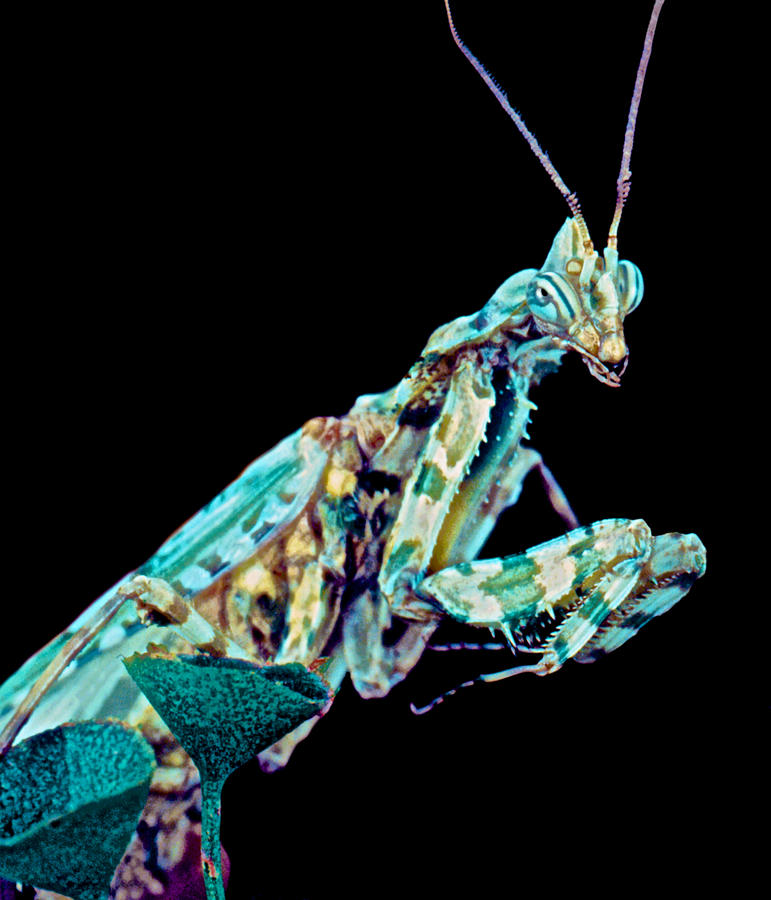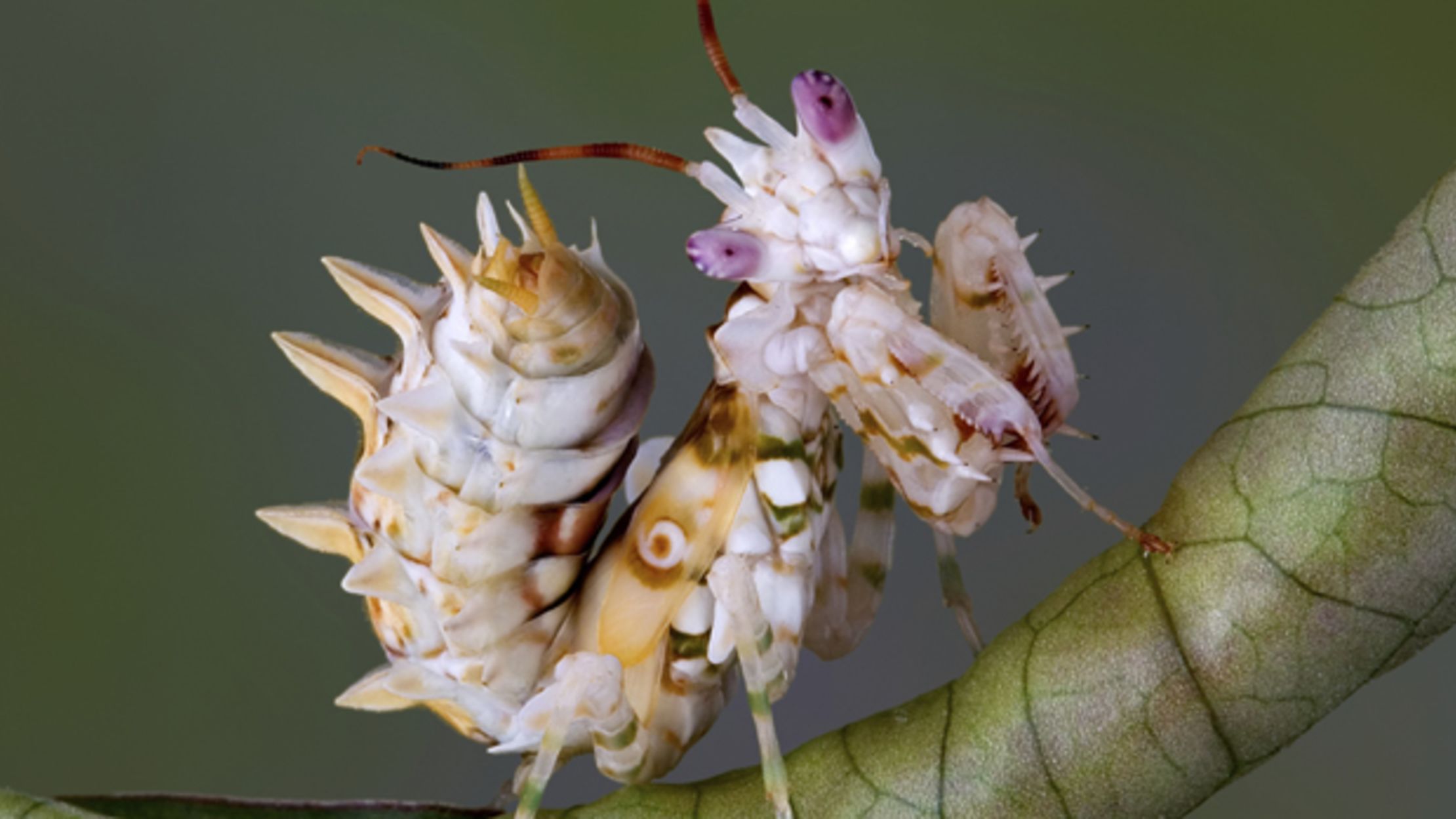Flower Mantis. When a bug flies by or lands on the flower - WHACK! - the nearly invisible Spiny Flower Mantis strikes. The spiny flower mantis remains motionless on the plant until the prey arrives and devouring them.
![Where Do Devil's Flower Mantis Live | [+] MANTIS WORLD](https://theprayingmantis.co.uk/wp-content/uploads/2019/10/Blepharopsis-mendica-Thistle-Mantis-Lesser-Devils-Flower-Mantis-Adult-Male_9.jpg)
Their physical traits, although pleasing to the eye, have a much grimmer underside to them. Deception is a mantis' best tool in the wild, which doesn't change even in captivity. It is a graceful and deadly ambush predator that, despite spending much time in wait, displays a wide variety of interesting behaviors.
While the journalist was incorrect in assuming this. Astonished by the insect's beauty, Neville named the mantis "Miss Frilly Pants" in reference to her purple "pantaloons.". "Nature is there for us all to share," Neville tells. Air humidity is very important for Idolomantis diabolica.
When a bug flies by or lands on the flower - WHACK! - the nearly invisible Spiny Flower Mantis strikes. Galinthias ameona or the Kenya Flower Mantis is a very small species of mantis native to parts of Africa such as Kenya. Firstly, it should be noted that the magnificent Devils Flower Mantis, like many related species, displays sexual dimorphism.
He's orange now but as the exoskeleton hardens it will become black and glossy like an ant. flower mantis. Firstly, it should be noted that the magnificent Devils Flower Mantis, like many related species, displays sexual dimorphism. The best way to heat the enclosure is by using light bulbs.
The eyes are purple, depending on the light conditions this can vary from lilac to deep purple. As nymphs these mantids have an orange spot on the upside of the abdomen which scares away predators by mimicking an eye. It is not a wilting wallflower, however.
Their physical traits, although pleasing to the eye, have a much grimmer underside to them. The male also has fewer spines. The particular flower mantis found by Neville is a female with a large swirl pattern on her back and protrusions that look like lavender buds along her legs.
It has a lime green or yellowish green body with pale white markings. The eyes are purple, depending on the light conditions this can vary from lilac to deep purple. Firstly, it should be noted that the magnificent Devils Flower Mantis, like many related species, displays sexual dimorphism.
When it's a female orchid praying mantis, a Southeast Asian insect that masquerades as a flower to attract prey. The spiny flower mantis remains motionless on the plant until the prey arrives and devouring them. This species of flower mantis is white with green stripes on the legs.
The Giant Devil's Flower Mantis (Idolomantis diabolica) starts life small but this impressive species blooms into massive, colorful adults. The Devil's Flower Mantis, also known as the Giant Devil's Flower Mantis, is one of the largest species of praying mantis, and is believed to be the largest to mimic flowers. Deception is a mantis' best tool in the wild, which doesn't change even in captivity.
When a bug flies by or lands on the flower - WHACK! - the nearly invisible Spiny Flower Mantis strikes. Firstly, it should be noted that the magnificent Devils Flower Mantis, like many related species, displays sexual dimorphism. Their physical traits, although pleasing to the eye, have a much grimmer underside to them.
Adult females, which are larger than males, can be five. When it's a female orchid praying mantis, a Southeast Asian insect that masquerades as a flower to attract prey. The flower mantis are any of the species of mantids belonging to the taxonomic family Hymenopodidae.
Firstly, it should be noted that the magnificent Devils Flower Mantis, like many related species, displays sexual dimorphism. This is a popular breed among the mantis keepers. The Giant Devil's Flower Mantis (Idolomantis diabolica) starts life small but this impressive species blooms into massive, colorful adults.
The spiny flower mantis remains motionless on the plant until the prey arrives and devouring them. Galinthias ameona or the Kenya Flower Mantis is a very small species of mantis native to parts of Africa such as Kenya. Air humidity is very important for Idolomantis diabolica.
Day and night cycles are very important for mantis development, so. He's orange now but as the exoskeleton hardens it will become black and glossy like an ant. flower mantis. The flower mantis are any of the species of mantids belonging to the taxonomic family Hymenopodidae.
Galinthias ameona or the Kenya Flower Mantis is a very small species of mantis native to parts of Africa such as Kenya. When a bug flies by or lands on the flower - WHACK! - the nearly invisible Spiny Flower Mantis strikes. Its beautiful green colouration and unique personality makes them popular among mantis keepers.
It is a graceful and deadly ambush predator that, despite spending much time in wait, displays a wide variety of interesting behaviors.
When a bug flies by or lands on the flower - WHACK! - the nearly invisible Spiny Flower Mantis strikes.
Day and night cycles are very important for mantis development, so. The first time a flower mantis was "discovered" was when an Australian journalist visited Indonesia and returned with stories of a plant that trapped insects in its petals and ate them. This mantid's name comes from its habit of hiding between the petals of flowers while waiting for a meal to come to it.
:max_bytes(150000):strip_icc()/spinyflowermantisgetty-75307bd27c9e44238a49821affde0375.jpg)





